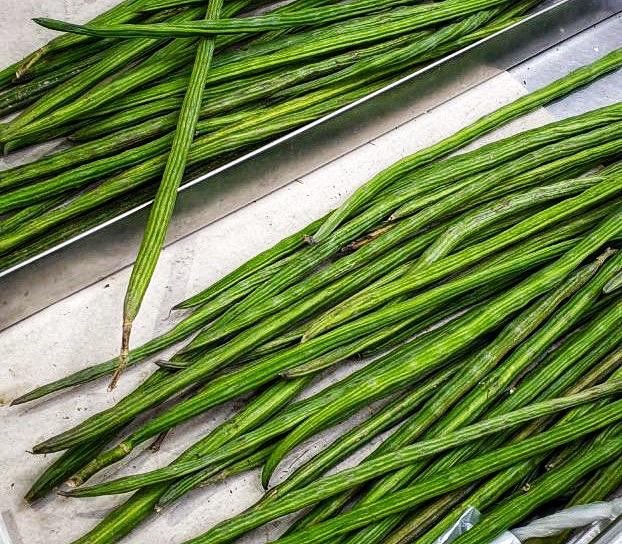
Munaga, Munga ara, Sarinjna or Segra are few of the hindi terms for Indian Drumstick.
Indian Drumsticks are long, bean-like vegetables, sometimes 30 – 45 cm long, that grow on very tall trees in India.These long drumsticks are used for various culinary purposes in India with regional variation.
These are pods or seeds of the plant Moringa olefira. Besides this, leaves and flowers of Moringa species also have excellent cooking uses.
Look for drumsticks with a smooth skin that is greenish in colour. Most drumsticks are bumpy, showing where the seeds are inside the tough exterior. It is best to choose drumsticks whose bumps are not too pronounced and not too close together. Also avoid drumsticks that seem too rigid and hard. Give it a slight twist – it should show some give, but not too much.
Drumsticks are best stored wrapped in paper in the crisper drawers of the fridge. They will keep for 3 or 4 days but are best consumed quickly.
Drumsticks can also be frozen. Cut them into lengths, 4 cm – 6 cm, and plunge into boiling water. Return to the boil and simmer for 2 minutes. Drain well and store in ziplock bags in the freezer.
Simply chop the drumsticks into convenient lengths according to the recipe. Most commonly this is around 4 cm – 6 cm. Remove any parts that are brown or dry. Simmer them until tender.
There is definitely an art to eating drumstick pieces. The outer covering is too hard to eat, but inside is a wonderful, soft (almost jelly-like) pulp in which the edible seeds sit. The other skin is never eaten. The trick is to remove the inner pulp and seeds. To do so, pick the drumstick piece up with the fingers, and crush it a little with your teeth, scraping out the soft pulp with your teeth as you pull the drumstick out of your mouth with your fingers. The outer covering is mashed a little with the teeth to extract all flavour from it and then it is discarded.
From where I can get drumsticks vegetables in Varanasi